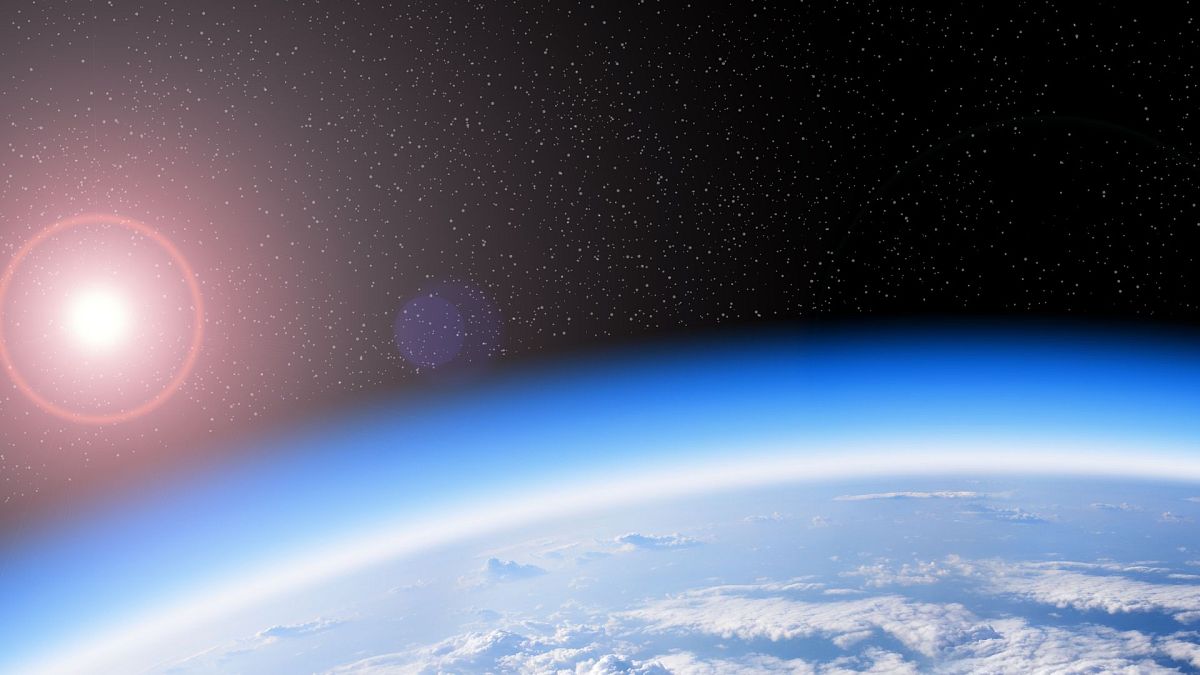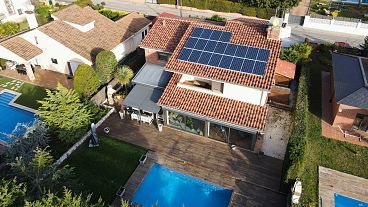We might one step closer to a giant solar shade that could help cool the Earth.
We all know that seeking shade is one of the best ways to escape the heat. But could a giant ‘sun umbrella’ help block harmful UV rays and cool the Earth?
That’s the latest idea from a US astronomer at the University of Hawaiʻi.
This isn’t the first time space-based sun shields - mirrors or shades placed in orbit between the sun and Earth - have been proposed for climate change prevention.
Until now, however, scientists have struggled to design a shield that balances weight and costs.
A potential solution is to tether it to a counterweight filled with asteroid material, according to the new proposal published in the Proceedings of the National Academy of Sciences (PNAS) journal.
If the design is workable, it could start mitigating climate change within decades, the paper’s author István Szapudi claims.
How could solar shields stop climate change?
'Sun blocking' technologies - also known as 'solar radiation modification' (SRM) - could theoretically cool down the Earth by shading it from some of the sun’s rays.
Until now, the solar shield concept faced a major hurdle: weight.
Previous proposals have placed the shield at the point where the Earth’s gravity and the sun’s radiation pressure are in balance.
However, these two counteracting forces mean the shield would have to meet minimum weight requirements to ensure it stays in place. This rules out low-cost, lightweight materials like graphene, which could be easily lifted into space.
By attaching the shield to a counterweight, positioned towards the sun, these weight restrictions could be circumvented, Szapudi theorises.
The shield could also be placed closer to Earth, making it more effective.
How would a tethered solar shield work?
The solar shield would be attached to a counterweight by a strong graphene tether.
The counterweight would slowly open once in space, allowing it to gradually fill with lunar dust or asteroid material that would act as ballast.
As the ballast would be captured in space, it would not need to be launched from Earth.
Acting as a counterweight, it would dramatically reduce the weight of the shield, according to Szapudi.
Together, the shield and counterweight would weigh around 318 million tonnes - 100 times less than untethered designs.
The shield itself, which is the part that would need to be launched into Space, would only account for around 32,000 tonnes, or one per cent of the weight.
Rockets today are capable of lifting up to 45,000 tonnes into low Earth orbit.
Why are some scientists against solar radiation modification?
The field of solar radiation modification includes other technologies such as solar radiation and pumping sun-blocking particles into the Earth’s atmosphere.
Acknowledging the potential risks of modifying the Earth’s atmosphere, Szapudi says space-based strategies are preferable.
“Given the severity of the problem, any avenue that might lead to the partial mitigation of a catastrophe should be investigated,” he writes.
Yet not all scientists are in agreement.
In a 2008 paper titled ‘20 reasons why geoengineering may be a bad idea’, US climatologist Alan Robock compares these technologies to putting Earth on “life support”, saying “the cure may be worse than the disease”.
Robock warns of the unknown consequences of such technologies, including the effects on regional climate, plants and solar power.
He also notes that relying on SRM technologies could result in abandoning carbon emissions cuts. This would allow other damaging effects of greenhouse gases, such as ocean acidification, to continue.
To account for the unpredictability of geoengineering, Szapudi suggests “a modular and reversible approach” using several smaller shields over a single shield.



